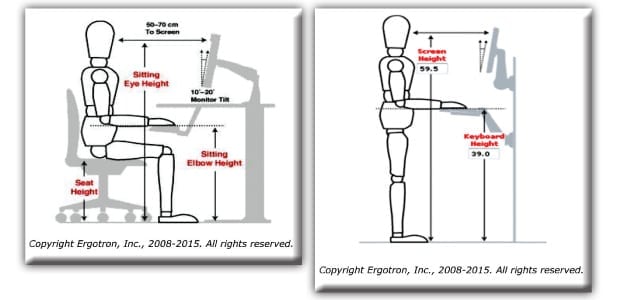By Brooke Allen
MS, OTR/L, CKTP, CEAS I
Have you ever been told by your parents to sit or stand up straight? For most of us, we can answer yes to this question. However, what we were told in childhood does not always carry over into adulthood. Posture is a vital part of our everyday lives in the workplace no matter if you sit or stand during the day. According to the Occupational Safety & Health Administration (2015), the best posture to practice is by keeping your body in a neutral position. In other words, it is important to make sure your chest and back muscles are well balanced, no slouching!
For sitting:
• Feet are resting on the floor or on a stable surface
• Ankles, knees, & hips are at 90 degrees
• Sit all the way back in the chair
• Shoulders are relaxed, elbows are bent at 90 degrees and keep your wrists straight
• Monitor is within arm’s reach and neck is in neutral
• Eyes should be looking at the top of the monitor screen
• And do not overreach when using the keyboard or mouse
For standing:
• Feet are hip width apart and are resting on the floor
• Hips & knees are in line with your feet & stand up nice and tall
• Relax your shoulders, bend your elbows at 90 degrees & keep your wrists straight
• Monitor is within arm’s reach and neck is in neutral
• Eyes should be looking at the top of the monitor screen
• And do not overreaching when using the keyboard or mouse
It is essential to make sure that you do not reposition yourself to fit the equipment. Instead, your equipment should be fit to you when you are in a neutral body position when sitting or standing at work. Good posture and maintaining a neutral body position when sitting or standing will prevent bad habits and muscle tightness/strain.
For all your hand therapy & ergonomic questions contact Brooke Allen, Hand Therapist at Spooner and Shaft Physical Therapy at 480-837-2595 or b.allen@spoonerphysicaltherapy.com.









